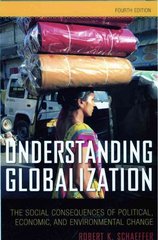PART 11: MARKET FOR LEMONS Jessica and Tom are two young professionals looking for a car. They are both nancially constrained and decide to purchase a car in the used car market (famously studied by Prof. Akerlof). Jessica and Tom are less aware of the workings of the used car market but still decide to give it a try as prospective buyers. There is a total of N S = 1, 000 sellers of used cars, and each of them knows the underlying quality of their car and what value they privately attach to it as a result. There are some good quality car sellers (Peaches) in proportion q and some low quality sellers (Lemons) in proportion 1 q. Sellers Buyers Vpch=10,000 14 =2,000 1/th = 15,000 VEB = 1,000 1. Jessica grew up on a farm and remembers from her youngest age how to x rusty tractor engines and broken motorcycles. As a result of this experience, she just needs to give a quick look under the hood and can tell right away the quality of the used car. Moreover, she is not afraid of telling the lemon owners that their car is a lemon! Suppose that q = 0.3 and that there are N J = 400 customers in the market, all of them just like Jessica (i.e. with the ability to detect a car's quality). What is the market clearing quantity? What is the market clearing price (if trade happens in positive quantity)? tht: Here, there are two separate markets each with a respective price, as the quality is observable. . Tom cannot claim such experience with combustion engine vehicles, and is left with having to hear each seller advocate for why her car is in better condition than the seller next door. That is, Tom cannot detect quality directly. (a) (b) Derive the supply curve in the market for used car (Q as a function of p), where this time lemons and peaches are pooled in the same market. Suppose again that q = 0.3. Given that Tom cannot trust the sellers' claims, he uses his economic intuition to try to infer the quality of the car based on the posted price. Based on the supply curve you derived, what is the expected quality of the car given a potential price p ? What is Tom's expected valuation as a buyer as a function of p? Hint: Given the range of 39, what type of car do you expect will sell? Compute the associated expected valuation for Tom. For price ranges where no car is expected to be sold, you can assume that if a car happens to be offered, then it must be a low-quality type. Find the equilibrium in a used car market made up of N T = 400 customers like Tom. What does each 'Tom' decide to do? Hint: Recall that TOm would be willing to buy if and only if ]E [VBlp] 2 p. What is the minimum q needed so that Tom customers are willing to buy a used car when they're unsure of its underlying quality








